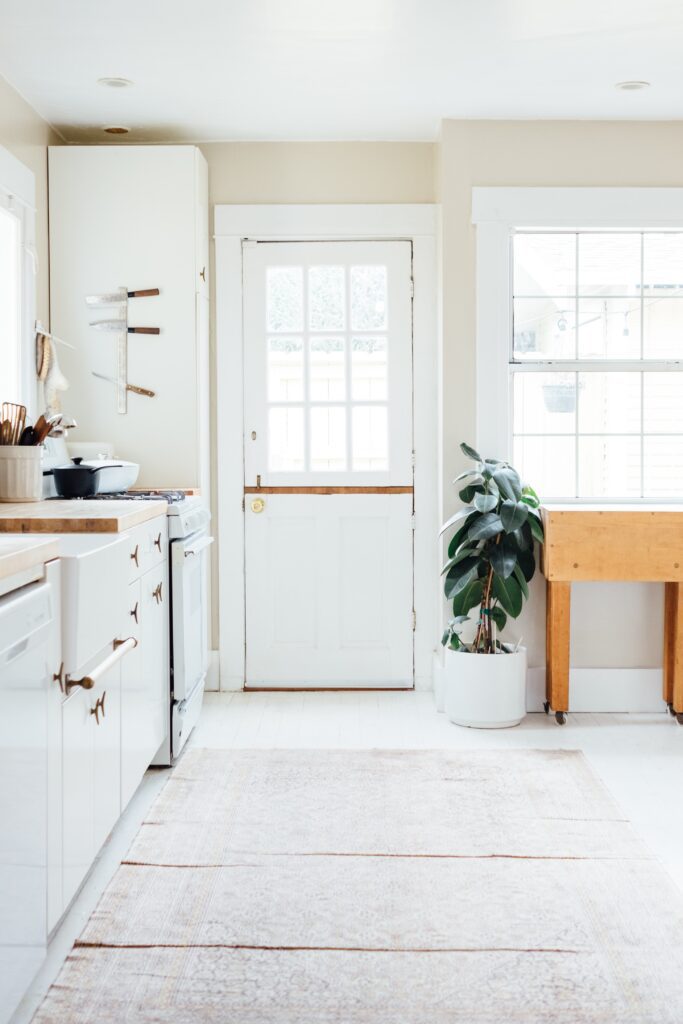If you’ve ever considered building a home that is not only environmentally friendly but also resilient in the face of extreme weather conditions, then a shipping container home might just be the perfect solution for you. With their sturdy construction and ability to withstand intense winds and heavy rain, shipping container homes have gained popularity as a sustainable housing option. In this article, we will explore the key elements and techniques necessary to build a shipping container home that can withstand extreme weather, providing you with a durable and secure living space.



This image is property of images.unsplash.com.
Understanding the Basics of Container Homes
What is a Shipping Container Home?
A shipping container home, also known as a container house, is a type of dwelling that is constructed using repurposed shipping containers. These containers, typically made of steel, provide a sturdy and eco-friendly framework for building a home. A container home offers a unique and affordable housing solution, especially for those looking for an alternative to traditional construction methods.
The Advantages of Container Homes
Container homes come with several advantages that make them an attractive option for many homeowners. First and foremost, they are incredibly cost-effective compared to conventional homes. The materials, such as shipping containers, can be relatively inexpensive, and the construction process often requires less time. Moreover, container homes are environmentally friendly as they involve recycling and repurposing materials that would otherwise go to waste. Additionally, container homes can be highly customizable, offering endless possibilities for unique designs and architectural styles.
Potential Challenges of Building a Container Home
While container homes have numerous benefits, there are some potential challenges to consider. One challenge is the need for proper insulation and ventilation. Shipping containers are not originally designed for human habitation, so extra attention must be given to insulation to ensure comfort throughout the year. Another challenge is the limited living space that comes with the standard dimensions of shipping containers. However, this can be overcome through careful planning and innovative design ideas. Lastly, obtaining necessary permits and meeting local building codes can sometimes be more complex for container homes compared to traditional houses. It is important to thoroughly research and consult with local authorities to ensure compliance with regulations.
Selecting the Right Shipping Container
Types of Shipping Containers
When it comes to container homes, there are various types of shipping containers to choose from based on your specific needs. The most commonly used containers are standard dry containers, which are made of weather-resistant steel and come in lengths of 20 or 40 feet. Open-top containers are another option, featuring a removable top for added versatility. High cube containers, with an increased height of 9.5 feet, provide more vertical space. Reefer containers, originally designed for refrigerated transportation, offer insulation features that can be beneficial for certain climates and purposes.
Choosing the Right Size
Selecting the appropriate size of shipping container is crucial for a well-designed and functional container home. The most common sizes are 20 feet and 40 feet in length, with 8 feet in width and 8.5 feet in height. Consider your space requirements, number of occupants, and intended use of the container home when determining the size that best suits your needs. It’s important to remember that larger containers may require additional structural support during the building process.
New vs Used Containers
One decision you’ll need to make is whether to use new or used shipping containers. New containers offer the advantage of being in prime condition, with no signs of wear or previous use. They typically come with a longer lifespan and may require fewer repairs or modifications. On the other hand, used containers can be more cost-effective and environmentally friendly since they involve recycling. However, it’s essential to carefully inspect used containers for any signs of damage or corrosion that may affect their strength and durability.



This image is property of images.unsplash.com.
Designing Your Container Home for Extreme Weather
Importance of a Robust Design
Designing a container home that can withstand extreme weather conditions is of utmost importance. High winds, heavy rains, and extreme temperatures can all pose challenges to the structural integrity and livability of your container home. A robust design that takes into account the specific weather patterns in your location will help ensure the safety and comfort of inhabitants.
Factoring Weather Patterns in Your Location
Before finalizing your container home design, it’s essential to thoroughly research the weather patterns in your area. Consider the frequency and intensity of storms, temperature fluctuations, and any other weather-related concerns. This knowledge will enable you to incorporate suitable design elements and materials that can better withstand these conditions.
Design Elements for Hot Climates
If you live in a hot climate, it’s crucial to design your container home with techniques to mitigate heat gain and promote cooling. Installing proper insulation, reflective roofing materials, and energy-efficient windows can help keep the interior cool. Incorporating shading devices, such as awnings or sunshades, can also provide relief from direct sunlight. It’s also beneficial to incorporate ample ventilation and cross-ventilation to allow for airflow and natural cooling.
Design Elements for Cold Climates
In cold climates, insulating your container home is of utmost importance to keep the interior warm and energy-efficient. Consider using insulation materials with high R-values, such as spray foam or rigid foam boards, to prevent heat loss. Additionally, incorporating efficient heating systems, such as radiant floor heating or energy-saving heaters, can help maintain a comfortable temperature during colder months. Proper sealing of windows and doors is also crucial to minimize drafts and heat loss.
Insulation Solutions for Shipping Container Homes
The Need for Proper Insulation
Insulation plays a vital role in container homes by providing thermal comfort and energy efficiency. Shipping containers are naturally made of steel, which is a poor insulator and can lead to fluctuations in temperature inside the house. Proper insulation helps regulate the interior temperature, prevents condensation, and reduces the need for excessive heating or cooling, thereby saving energy and reducing utility costs.
Types of Insulation Materials
When selecting insulation materials for your container home, consider factors such as their insulating properties, fire resistance, moisture resistance, and compatibility with the container structure. Some popular insulation materials for container homes include spray foam, rigid foam boards, mineral wool, and fiberglass batts. Each material has its advantages and considerations, so it’s important to choose the one that best suits your needs and budget.
How to Install Insulation
Installing insulation in a shipping container home requires careful planning and attention to detail. The first step involves thoroughly cleaning the container surface and sealing any gaps or holes. This is followed by applying the chosen insulation material either through spraying, attaching rigid foam boards, or fitting batts between studs. Proper sealing of the insulation with a vapor barrier or reflective foil is essential to prevent moisture buildup. It’s crucial to work with experienced professionals or consult detailed installation guides to ensure insulation is installed correctly and effectively.



This image is property of images.unsplash.com.
Installing Strong and Durable Doors and Windows
Choosing the Right Type of Doors and Windows
Selecting quality doors and windows is essential for the security, aesthetics, and functionality of your container home. There are various options available, ranging from traditional doors and windows to more innovative designs specifically intended for container structures. Consider factors such as durability, energy efficiency, weather resistance, and architectural compatibility when choosing the right type for your container home.
Impact-Resistant Options
In areas prone to hurricanes or strong winds, it’s advisable to consider impact-resistant doors and windows. These specially designed products can withstand high winds, flying debris, and extreme weather conditions. Impact-resistant glazing with laminated glass and reinforced frames can provide added protection and peace of mind for you and your loved ones.
Sealing for Weather Protection
To ensure weather protection and energy efficiency, it’s crucial to properly seal doors and windows in a container home. Weatherstripping and caulking are effective methods to prevent air or water leaks. High-quality seals and gaskets should be used to achieve a tight seal that can withstand various weather conditions. Regular maintenance and inspections are also important to address any potential seal failures and maintain the integrity of your container home.
Adding Reinforcements to Your Container Home
Need for Structural Reinforcement
Depending on the design and structural requirements of your container home, adding reinforcements may be necessary to ensure stability and longevity. While shipping containers are inherently strong, modifications such as removing sections of the walls or adding large openings for windows and doors can weaken their overall strength. Structural reinforcements help distribute loads and strengthen the container to withstand external forces such as high winds or earthquakes.
Reinforcement Materials and Techniques
Common materials used for structural reinforcements in container homes include steel beams, columns, and trusses. These elements can be strategically placed to reinforce the container framework and provide additional strength. Welding or bolting techniques are typically used to secure the reinforcements to the container structure. It is crucial to consult with a structural engineer or experienced professionals to determine the specific reinforcement needs of your container home based on your design and geographical location.
Where to Add Reinforcements in Your Design
Reinforcements should be strategically placed in areas that are likely to experience higher stress or load, such as corners, cutouts for windows or doors, or supporting walls. The specific locations and techniques for adding reinforcements will depend on the structural design of your container home. A professional assessment will help identify critical areas that require extra reinforcement to ensure the overall stability and safety of your container home.
Building a Strong Roof for Your Container Home
Roofing Options for Shipping Container Homes
When it comes to roofing options for container homes, there are various choices to consider. Traditional roofing materials such as asphalt shingles, metal roofing, or concrete tiles can be used based on personal preference and architectural compatibility. Flat roofs are also a popular choice, as they provide additional usable space and are relatively easier to install on container structures. Green roofs, featuring vegetation and plants, are an eco-friendly option that adds insulation and aesthetic appeal.
Installing a Weatherproof Roof
To ensure your container home is well-protected from the elements, it’s crucial to properly install a weatherproof roof system. This includes adequate roof insulation, moisture barrier installation, and effective flashing to prevent water penetration. Additionally, regular roof inspections and maintenance are important to address any potential leaks or damage promptly.
Solar Panel Integration
Container homes present a great opportunity for solar panel integration due to their flat roof design and ample space for panel installation. Solar panels can provide an environmentally friendly and cost-effective energy source for your home. Proper system planning, installation by qualified professionals, and regular maintenance are key to maximizing the benefits of solar power in your container home.
Establishing a Secure Foundation
Why a Strong Foundation is Important
A strong and secure foundation is essential for container homes to withstand various forces, including shifting soil, seismic activity, and the weight of the structure itself. It provides stability, prevents settling or shifting, and ensures the even distribution of loads throughout the container home. A properly designed foundation contributes to the overall safety and longevity of your container home.
Types of House Foundations
There are different types of foundations to consider when building a container home. The most common options include concrete slab foundations, pier foundations, and strip foundations. Concrete slabs offer a stable and level base, suitable for flat or level building sites. Pier foundations involve supporting the corners and center points of the container on individual concrete piers. Strip foundations, also known as grade beam foundations, utilize continuous footings or beams to support the container structure. The choice of foundation will depend on factors such as soil conditions, local building codes, and the specific design of your container home.
How to Create a Secure and Weather-resistant Foundation
Creating a secure and weather-resistant foundation for your container home involves several steps. It is essential to consult with a structural engineer or foundation specialist to assess the soil conditions, determine the appropriate foundation type, and design the foundation system. Proper excavation, leveling, and compaction of the site are essential to ensure a stable foundation. Additionally, ensuring adequate drainage and waterproofing measures will help protect the foundation from water damage and prevent moisture-related issues.
Implementing Effective Drainage Solutions
Importance of a Good Drainage System
Proper drainage is crucial to prevent water accumulation around your container home, which can lead to moisture-related problems such as mold, rot, and foundation damage. A well-designed drainage system helps redirect water away from the foundation of your container home and ensures the surrounding area remains dry and stable.
Drainage Solutions for Shipping Container Homes
There are several drainage solutions to consider when building a container home. Installing gutters and downspouts can help collect rainwater from the roof and direct it away from the foundation. French drains, which consist of a perforated pipe surrounded by gravel, can effectively channel excess water away from the site. It’s also important to grade the site appropriately to promote natural runoff and prevent water pooling.
Maintaining Your Drainage Over Time
Regular maintenance of your drainage system is essential to ensure its effectiveness and longevity. This includes cleaning gutters and downspouts regularly to prevent clogs, inspecting the drainage pipes for any damage or blockages, and monitoring the grading around the foundation. Addressing any drainage issues promptly will help prevent potential water damage and maintain the structural integrity of your container home.
Finalizing Your Shipping Container Home
Tips for the Final Stages of Construction
As you approach the final stages of construction for your container home, there are a few key tips to keep in mind. First, ensure all necessary permits and inspections have been obtained and completed according to local regulations. Double-check that all electrical, plumbing, and HVAC systems are properly installed and functional. It’s also important to perform a thorough inspection of the container home, addressing any cosmetic or structural issues before finishing touches such as painting and flooring.
Doing a Final Weatherproofing Check
Before considering your container home complete, it’s crucial to conduct a final weatherproofing check. This involves inspecting the roof for any signs of leaks or damage, ensuring all windows and doors are properly sealed, and verifying the insulation effectiveness. Pay attention to any areas that may require additional weatherproofing measures and address them promptly to avoid any potential issues in the future.
Maintaining Your Home Post-Construction
Once your container home is complete, regular maintenance is key to ensure its longevity and continued functionality. Conduct regular inspections of the roof, doors, and windows for any signs of damage or wear. Keep the drainage system clear and functioning properly to prevent water-related issues. Regularly check and maintain insulation to ensure energy efficiency and interior comfort. Finally, maintaining a well-ventilated home and addressing any moisture-related concerns will help prevent mold or mildew growth and preserve the quality of your container home over time.
Building a shipping container home that can withstand extreme weather requires careful planning, attention to detail, and the use of quality materials and design elements. By understanding the basics of container homes, selecting the right shipping containers, designing for extreme weather, implementing proper insulation and reinforcements, and establishing a secure foundation and drainage system, you can create a durable and resilient home. Taking the necessary steps to ensure a weatherproof and well-maintained container home will provide comfort, energy efficiency, and peace of mind for years to come.
